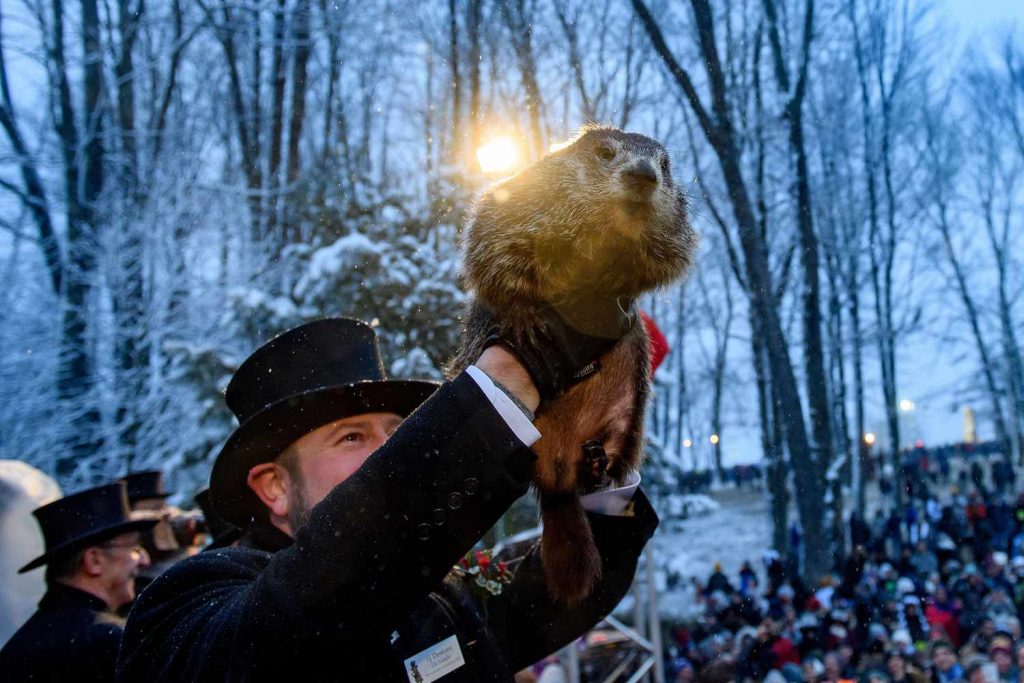Today, Groundhog Day is regarded as a lighthearted North American tradition. Americans cherish and look forward to the groundhog’s announcement of the nearing of spring or the daunting cold days to come. Yet, the origins of Groundhog Day and the ancient history of this tradition remain unknown to many.
Groundhog Day dates back to the pre-Christian era in the British Isles. The earliest recount of the celebration is in 10th-century Irish literature, where the celebration of Imbolc is mentioned. Imbolc was a pagan festival believed to mark the beginning of spring. The festivities began on Feb. 1 and ended at sundown on Feb. 2. In Neolithic Ireland and Scotland, Imbolc was considered the midway point between the winter solstice and spring equinox.
Feb. 2 is also celebrated in the Christian festival, Candlemas, a feast of the Purification of the Blessed Virgin where candles are blessed and distributed for the winter. Christians believed that sunny Candlemas would lead to 40 extra days of winter weather.
Groundhog Day origins are also influenced by beliefs of the Middle Ages. During the Middle Ages, animals like the badger and bear were thought to wake up from hibernation on Feb. 2 to inspect their shadow. The legend also involved animals like the badger and hedgehog coming out of their underground burrows to predict the upcoming season’s weather. On Feb. 2, if the animal saw its shadow it meant six weeks of winter remained. But on a cloudy day, the animal would not see its shadow and this suggested an early spring season.
By the 1880s, the mass migration of Germans to the United States led to the Middle Ages’ legend making its way into Pennsylvania. Because there were no hedgehogs or badgers in Pennsylvania, German immigrants adapted the legend to include other small animals who glimpsed at their shadows. The groundhog became the perfect substitution for the previously esteemed badger. Like the badger, groundhogs came out from their underground burrows to examine their shadow.
In 1887, the local Punxsutawney, Pennsylvania newspaper editor, Clymer Freas, came up with the idea of the first Groundhog Day celebration. He shared his proposal with the Punxsutawney Groundhog Club, a group of groundhog hunters and businessmen. The 1887 celebration involved the club traveling to Gobbler’s Knob, where the first groundhog saw his shadow.
Since then, the Punxsutawney Groundhog Club’s Inner Circle continued the tradition in a televised Groundhog Day event with ample media coverage. Inner Circle members wear top hats and speak in a Pennsylvania-Dutch dialect, and event members speak to the groundhog in “Groundhogese.” Groundhogs like Punxsutawney Phil became celebrated throughout the United States and people from various parts of the country traveled great distances to visit Phil.
Out of the 125 Groundhog Day predictions made by Punxsutawney Phil, only 20 early springs have been forecasted. Though Phil’s predictions have a 39 percent accuracy rate, the joy that comes with the prediction of an early spring is undeniable, especially after the release of the 1993 film Groundhog Day. Attendance at the Punxsutawney celebration greatly increased to the tune of 30,000 people due to the publicity.



